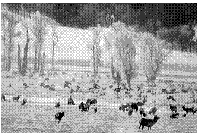

THE ISSUEElimination of top predators (e.g. wolves) from regions like the Greater Yellowstone Ecosystem leads to changes in prey population density and behavior, as well as overall community structure. This issue addresses how ecosystems change when predators are removed, and what happens in such a system when the predators are restored. It is designed to address students' misconception that predators only influence ecosystems directly through predation. In the Greater Yellowstone Ecosystem, wolves exert impacts not only on their prey (elk) but also on lower trophic levels (e.g. willows). ECOLOGICAL CONTENTpredation, trophic cascades, keystone species, direct vs. indirect effects, top-down vs. bottom-up effects, predator control, predation risk, prey behavior STUDENT-ACTIVE APPROACHESpairs share, hypothesis development, informal group work STUDENT ASSESSMENTSformulate hypotheses, essay quiz, minute paper, and concept map AUTHORCynthia Dott
ACKNOWLEDGMENTSThis figure set was developed for Bio 220 at Fort Lewis College, and was improved by input from students in that course. Use of teaching examples of this sort was inspired by mentors like Diane Ebert-May, as well as other TIEE Issues Figure and Data sets. The exercise was improved by the helpful comments of Erin Lehmer, the TIEE Issues Editor Charlene D'Avanzo, and two anonymous reviewers. CITATIONDott, Cynthia. January 2009, posting date. Of wolves, elk and willows: how predation structures ecosystems. Teaching Issues and Experiments in Ecology, Vol. 6: Issues Figure Set #2 [online]. http://tiee.ecoed.net/vol/v6/figure_sets/trophic_cascades/abstract.html |

Elk browsing among cottonwood trees in the winter along the Lamar River in the Northern Range of Yellowstone National Park, during the period when wolves were not present. From Ripple and Beschta (2004b).
full size image |
<top> | |